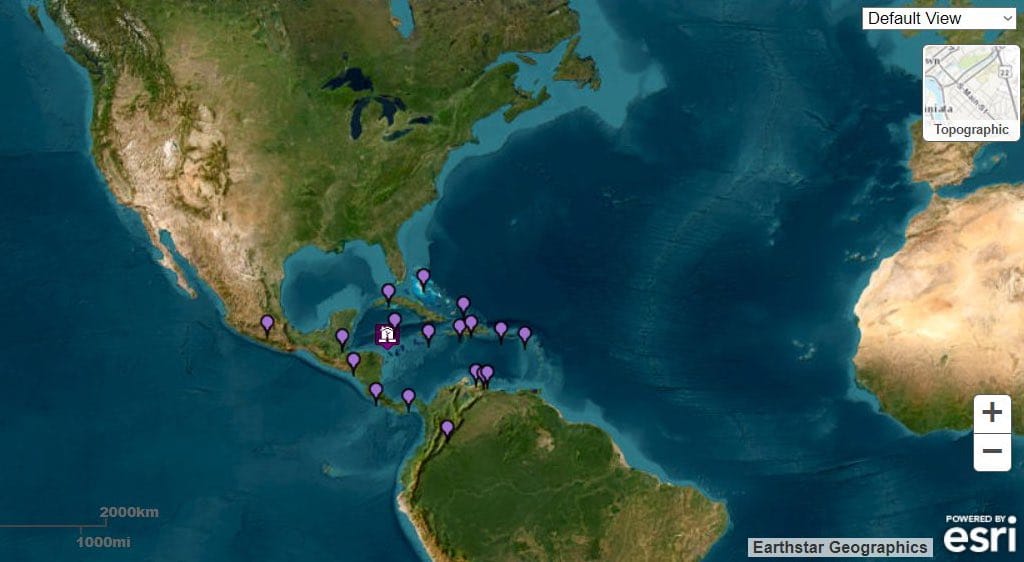Last updated: 19 minutes ago
On Saturday, a formidable 7.6 magnitude earthquake shook the Caribbean Sea, with its epicenter located approximately 130 miles southwest of George Town, Cayman Islands. This seismic event, which occurred at 6:23 PM Eastern Time, initially sent shockwaves of concern across the region due to the potential for a tsunami.
Initial Response and Tsunami AlertsThe earthquake's magnitude was significant enough to trigger a series of tsunami warnings across several Caribbean countries. National agencies, including the U.S. Tsunami Warning System, swiftly issued alerts for Cuba, Honduras, the Cayman Islands, Puerto Rico, and the U.S. Virgin Islands. The warnings were based on the principle that earthquakes of this size in this location could generate tsunamis, which are dangerous to shorelines near the source.
Social media platforms erupted with posts from concerned citizens and news outlets, highlighting the urgency of the situation. The panic was palpable as people shared updates, safety advice, and personal accounts from the ground.
Tsunami Alerts Status UpdateAs more data was analyzed and the actual impact became clearer, many of these initial tsunami alerts were canceled. According to updates from the U.S. Geological Survey (USGS) and the Pacific Tsunami Warning Center (PTWC), the threat of a destructive tsunami was significantly reduced. By 8:30 PM Eastern Time, most alerts had been lifted, with only minor waves observed in some areas.
However:
Cuba still maintains a tsunami threat, with potential waves reaching 1 to 3 meters above the tide.
- Honduras and the Cayman Islands are under an advisory for waves up to 0.3 to 1 meter above tide level.
- Puerto Rico and the U.S. Virgin Islands have shifted from warnings to advisories, focusing on potential sea level fluctuations and strong currents rather than destructive waves.
Impact and Safety MeasuresDespite the easing of widespread panic, the earthquake has left its mark. Local authorities in affected areas have:
Advised residents to stay clear of coastlines, beaches, and harbors where the risk of strong currents and small tsunamis could still pose threats.
- Encouraged people to move to higher ground or inland where necessary, especially in regions still under advisory.
- Initiated checks for any structural damage to buildings or infrastructure, although no significant damages have been reported yet.
🚨 #BREAKING: A VIOLENT 8.0 magnitude earthquake has just struck the Caribbean Sea, resulting in numerous tsunami alerts
— Nick Sortor (@nicksortor) February 8, 2025
U.S. territories such as Puerto Rico and the U.S. Virgin Islands are impacted pic.twitter.com/OR0pd4IJ9K
The quick response from emergency services and the cancellation of most tsunami warnings have helped mitigate what could have been a more disastrous scenario. However, the event serves as a stark reminder of the Caribbean's vulnerability to seismic activities due to its location along major tectonic plate boundaries.
Geological ContextThe Caribbean is situated along the boundary between the North American and Caribbean Plates, making it prone to earthquakes. The strike-slip fault near where this earthquake occurred is known for producing significant seismic events. Historical data from the USGS points out that this region has experienced ten magnitude 6 or greater earthquakes within the last century.
One of the most notable was the 2018 earthquake of similar magnitude, which caused damage and a small tsunami. This history underscores the importance of ongoing seismic monitoring and preparedness in the region.
Community and Media ResponsePosts on platforms like X (formerly Twitter) have been crucial in disseminating real-time information. From initial warnings to updates on the cancellation of alerts, social media has played a dual role in both spreading fear and providing relief as the situation evolved. Users shared personal experiences, safety tips, and rallied community support for those in potentially affected areas.
What's Next?
- Continued Monitoring: Seismic and tsunami monitoring agencies will continue to watch for aftershocks or any further changes in sea level.
- Infrastructure Checks: Local governments will assess any potential damage to infrastructure, ensuring public safety.
- Preparedness: This event will likely lead to renewed calls for disaster preparedness in the Caribbean, focusing on both public education and emergency response capabilities.
ConclusionWhile the immediate threat of a widespread tsunami has subsided, the 7.6 magnitude earthquake in the Caribbean Sea has once again highlighted the region's seismic risks. As the community returns to normalcy, the focus now shifts towards recovery, reassessment of emergency protocols, and strengthening resilience against future natural disasters. For those in the still-advisory areas, vigilance remains key.
Stay updated through official channels, and ensure you are prepared for any potential emergency. Remember, in the face of nature's unpredictability, preparedness is your best defense.


